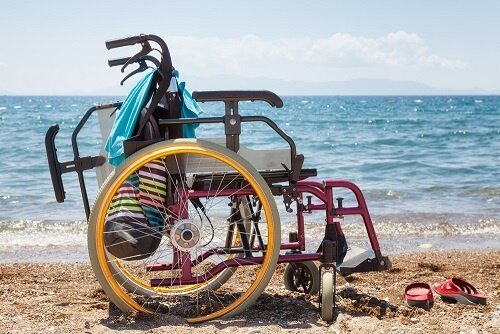Golestan seeks to enhance accessible tourism

TEHRAN – Golestan province in northern Iran seeks to expand its tourism industry by implementing comprehensive measures to ensure that all tourist destinations, products, and services are accessible to everyone, regardless of physical limitations, disabilities, or age.
In a recent meeting dedicated to accessible tourism, a number of local officials, representatives of Gorgan’s executive bodies, private sector stakeholders, and representatives of non-governmental organizations exchanged views to develop tourism for seniors and individuals with disabilities, ensuring all tourism facilities are universally accessible and barrier-free, CHTN reported.
During the session, Ali Nouri, an official with Golestan’s tourism directorate, emphasized that raising awareness within both public and private sectors to meet the needs of seniors and individuals with disabilities can create a supportive environment for sustainable actions.
He stated, "Ensuring equal access for all citizens, including those with special conditions such as the elderly and disabled, to the province's tourism facilities is part of their civil rights."
The meeting also involved the issuance of mandates to the members of Golestan’s Accessible Tourism Desk. The discussion highlighted the need for suitable infrastructure and facilities to make museums and tourist attractions accessible.
Members of the desk also stressed the importance of equipping and creating necessary facilities during the construction of these sites, with a focus on benefiting all individuals, including those with disabilities and seniors, was underscored.
Accessible tourism, aka inclusive tourism or disability tourism, refers to the travel industry’s efforts to cater to individuals with disabilities, ensuring they can participate in tourism activities and access facilities without barriers. It primarily focuses on providing equal opportunities for people with disabilities to enjoy travel experiences, accommodations, attractions, and transportation services. The concept extends beyond physical disabilities to include sensory impairments, cognitive limitations, and other accessibility needs.
One key aspect of accessible tourism involves the design and modification of infrastructure and facilities to accommodate individuals with disabilities. This includes wheelchair ramps, elevators, widened doorways, accessible restrooms, and tactile signage.
Promoting accessible tourism not only benefits travelers with disabilities but also presents economic opportunities for destinations and businesses. According to the UN Tourism, individuals with disabilities represent a significant market segment within the global tourism industry. By making destinations and services more accessible, businesses can tap into this market and attract a broader customer base. Moreover, accessible tourism initiatives contribute to job creation, economic growth, and social inclusion within communities.
AM
Leave a Comment